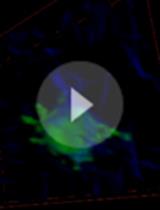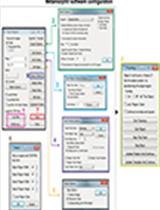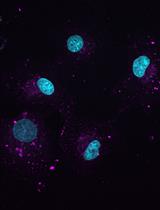- EN - English
- CN - 中文
Scratch Wound Healing Assay
划痕实验
发布: 2012年03月05日第2卷第5期 DOI: 10.21769/BioProtoc.100 浏览次数: 122984
Abstract
The scratch wound healing assay has been widely adapted and modified to study the effects of a variety of experimental conditions, for instance, gene knockdown or chemical exposure, on mammalian cell migration and proliferation. In a typical scratch wound healing assay, a “wound gap” in a cell monolayer is created by scratching, and the “healing” of this gap by cell migration and growth towards the center of the gap is monitored and often quantitated. Factors that alter the motility and/or growth of the cells can lead to increased or decreased rate of “healing” of the gap (Lampugnani, 1999). This assay is simple, inexpensive, and experimental conditions can be easily adjusted for different purposes. The assay can also be used for a high-throughput screen platform if an automated system is used (Yarrow and Perlman, 2004).
Materials and Reagents
- Human MDA-MB-231 cell line (ATCC, catalog number: HTB-26 ™)
- Dulbecco's modified eagle medium (DMEM) (Life Technologies, Invitrogen™, catalog number: 10313-021 )
- Fetal bovine serum (FBS) (ATCC, catalog number: 30-2020 ™)
- Phosphate buffered saline (PBS) (Life Technologies, Invitrogen™, catalog number: 14190-144 )
- Glutaraldehyde (Sigma-Aldrich, catalog number: G6257 )
- Ethanol (Sigma-Aldrich, catalog number: 459836 )
- Crystal violet (Sigma-Aldrich, catalog number: C3886 )
Equipment
- BD Falcon 24-well tissue culture plate (Fisher Scientific, catalog number: 08-772-1H; BD Biosciences, catalog number: 353226 )
- Rainin pipet tips (1 ml) (Mettler-Toledo, catalog number: GPS-L1000 )
- Cell culture incubator: 37 °C and 5% CO2
Software
- Photoshop or ImageJ (http://rsb.info.nih.gov/ij/download.html)
Procedure
文章信息
版权信息
© 2012 The Authors; exclusive licensee Bio-protocol LLC.
如何引用
Chen, Y. (2012). Scratch Wound Healing Assay. Bio-protocol 2(5): e100. DOI: 10.21769/BioProtoc.100.
分类
癌症生物学 > 侵袭和转移 > 细胞生物学试验
细胞生物学 > 细胞运动 > 细胞迁移
细胞生物学 > 细胞活力 > 细胞增殖
您对这篇实验方法有问题吗?
在此处发布您的问题,我们将邀请本文作者来回答。同时,我们会将您的问题发布到Bio-protocol Exchange,以便寻求社区成员的帮助。
提问指南
+ 问题描述
写下详细的问题描述,包括所有有助于他人回答您问题的信息(例如实验过程、条件和相关图像等)。
Share
Bluesky
X
Copy link











